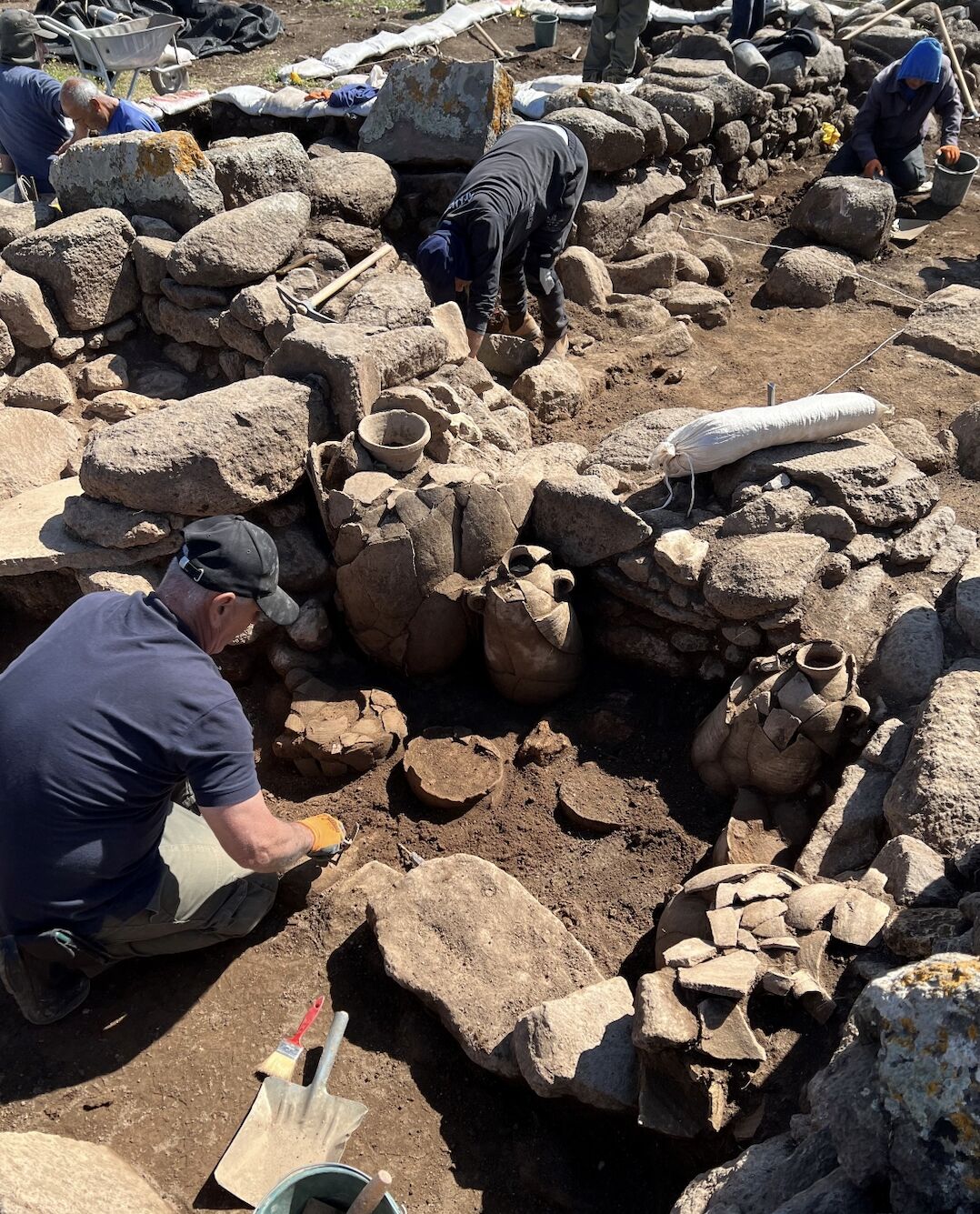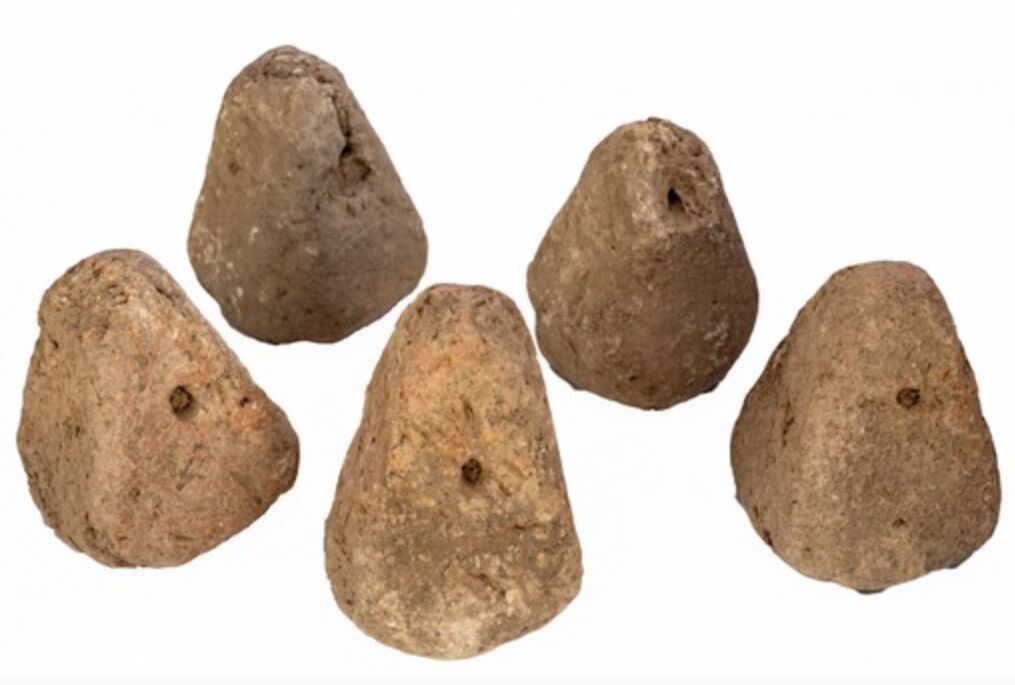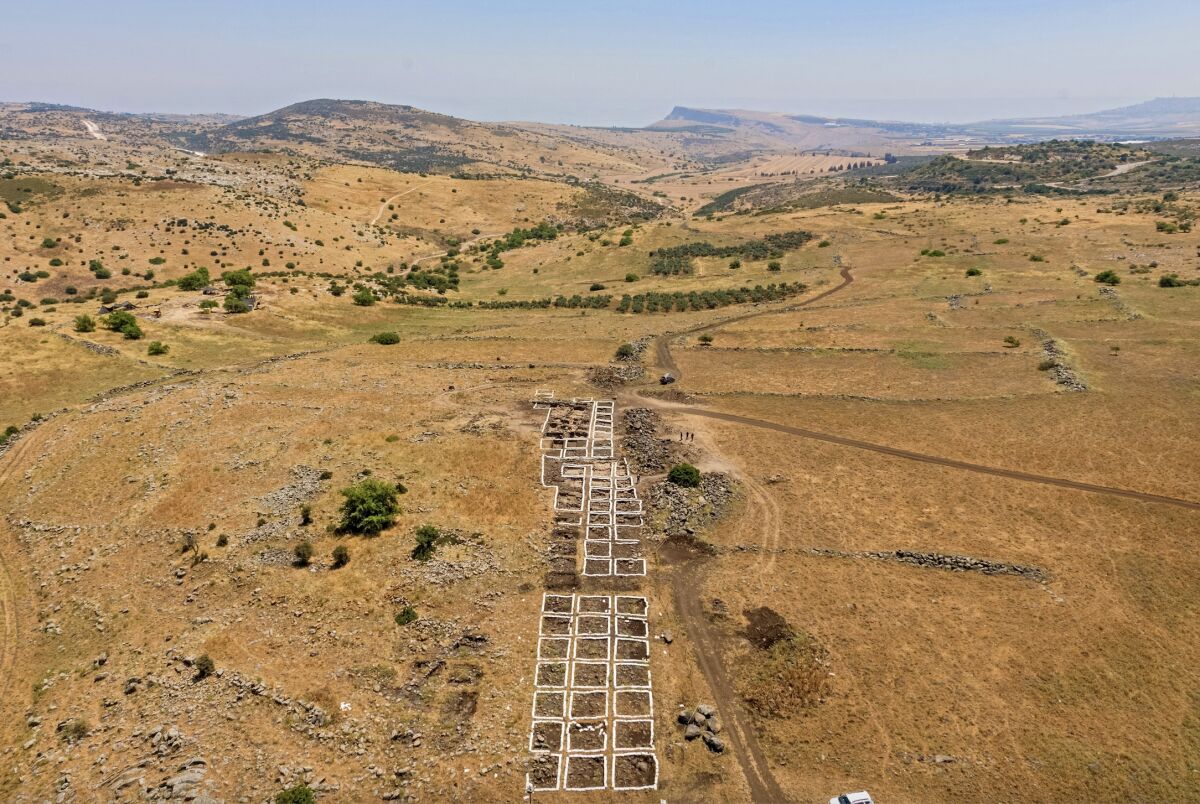10th-Century B.C.E. and Hasmonean-Era Farmstead Found. But Why Did the Farmers Flee?
In the fertile landscape west of the Sea of Galilee, archaeologists excavating at Horvat Assad have uncovered a veritable “time capsule”—an “agricultural farmstead” from 2,100 years ago, replete with iron tools, storage vessels, and dozens of loom weights eerily left carefully positioned exactly where their owners had stored them. The abandoned nature of the Hasmonean-era farmstead suggests that the owners were forced to hurriedly flee—but from what?

Dr. Amani Abu-Hamid, director of the excavations (on behalf of the Israel Antiquities Authority), noted in a Wednesday press release: “We were very lucky to discover a time capsule, frozen in time, in which the finds remained where they were left by the occupants of the site, and it seems that they left in haste in face of an impending danger, possibly the threat of a military attack. The weaving loom weights were still on the shelf, the storage jars were intact.”
Just at face value, the finds—including picks, scythes, coins and figurines—are remarkable. These constitute the first remains of this Hellenistic/Hasmonean period found in this part of the Galilee region, helping to fill in gaps in knowledge of this period. Not only that, much earlier remains were also found at the site—namely, evidence of a “substantial 10th-century b.c.e. Iron Age agricultural settlement.” This century is famous as the period of the United Monarchy: Israel at the time of kings David and Solomon.

Horvat Assad, near Nahal Arbel in the eastern Galilee region, makes up part of the wider territory allotted to the biblical tribe of Naphtali primarily, as well as to Zebulun and Issachar. The Bible describes this as an important agricultural area, including during the 10th century. 1 Chronicles 12:41 specifically names these three tribes as supplying produce to King David “in abundance.”

But what of the primary remains thus far uncovered by the archaeologists—those of the Hellenistic/Hasmonean period? How to explain the abandonment of this site?
Preliminary analysis puts the use of the site no earlier than the late second century b.c.e. Dr. Abu-Hamid comments: “We know from the historical sources, that in this period, the Judean Hasmonean Kingdom expanded into the Galilee, and it is possible that the farmstead was abandoned in the wake of these events. More research is required to determine the identity of the inhabitants of the site.” The Jewish Hasmonean dynasty reigned over varying extents of territory from circa 140–37 b.c.e. Considering this, one theory posits that the inhabitants were pagans fleeing from the advancing Hasmoneans.

The primary sources for this period are the books of Maccabees, as well as the writings of Josephus. Josephus’s Wars and Antiquities describe this area as being eventually under the control of Hasmonean ruler Alexander Jannaeus (103–76 b.c.e.), who ruled over a Jewish nation “bigger and stronger than at any time since the days of Solomon” (Kings of the Jews, Norman Gelb). His reign was marked by struggles against Egyptian ruler Ptolemy ix Lathyros, who wrought carnage on the Galilee region in 103 b.c.e. Could this perhaps have caused the farmstead owners to flee? Josephus wrote that Jannaeus “took his army, and went to meet Ptolemy; but Ptolemy fell upon Asochis, a city of Galilee, and took it by force on the sabbath day, and there he took about 10,000 slaves, and a great deal of other prey” (Antiquities, 13.12.4). Asochis was a city southwest of Horvat Assad. Perhaps the 2,100-year-old Horvat Assad farmstead was abandoned—work tools left in place—in relation to these dramatic events?

We will hopefully find out the answers in the near future, as the coins from the site are studied and carbon-14 samples are returned. Whatever the case, the finds are unique and speak to the rich history of the region.
As an aside, the reason for the excavation is just as interesting as the finds themselves: The farmstead excavation is part of a salvage dig led by the Israel Antiquities Authority in preparation for a new waterworks project. The Mekorot Company Project’s billion-shekel plan is to funnel surplus artificially desalinated water from the Mediterranean Sea all the way into the Sea of Galilee (and surrounding areas), in order to maintain a healthy water level and to relieve the stress of relying solely on the lake for providing fresh water.
Otherwise, if it gets too dry, farmers of the region may be forced to “disappear” again.
